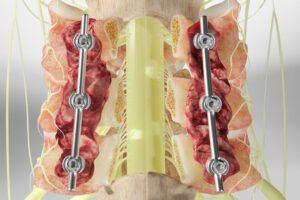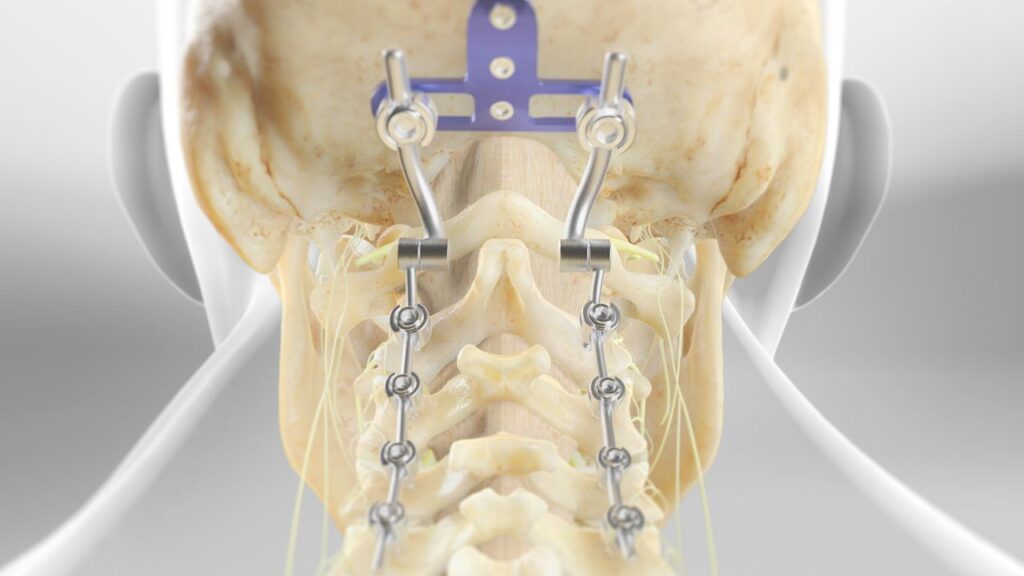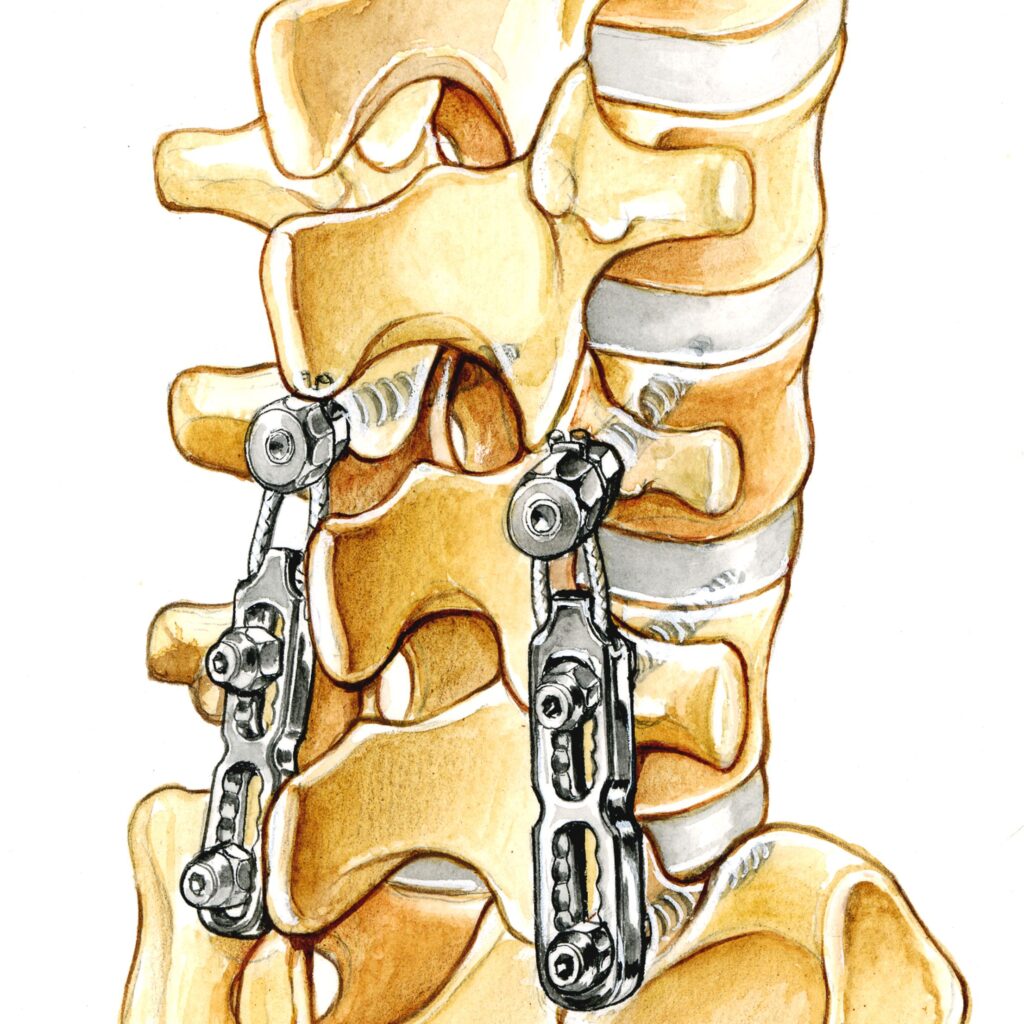Cervical Fusion – Indications And Contraindications, Methods of Surgery

Cervical fusion is a surgical procedure that is a type of arthrodesis. The purpose of the surgery is to immobilize one or more vertebral-motor segments. This is accomplished by installing special structures that hold the vertebrae to be fused together securely. As a result, over time, they firmly fuse, which completely eliminates the possibility of movement and the development of painful sensations in the background. Cervical fusion is necessary for many spinal pathologies that are not amenable to conservative treatment. Therefore, it is usually combined with other surgical interventions. The spinal surgeons will help you get rid of your spine problems and perform fusion surgery.
Indications for Cervical Fusion

Source: viewmedica.com
Spondylolisthesis and vertebral instability, which is accompanied by severe pain, require removal of motion of the vertebral-motor segment. The vertebral-motor segment is the structural and functional unit of the spine that consists of two adjacent vertebrae, the disc between them, and the facet joint and its ligaments. Vertebral instability is most commonly caused by severe osteochondrosis, in which the intervertebral discs are severely damaged and completely lose their function. As a result, a large number of patients additionally experience not only intervertebral hernias, but also facet joint arthrosis and compression of the spinal cord and its nerve roots.
Each of these conditions is accompanied by severe pain, which in almost half of the cases cannot be treated with conservative methods. Therefore, in such cases patients are assigned a surgical intervention appropriate to the situation, followed by cervical fusion. This may include:
- facetectomy, indicated for severe spondyloarthrosis;
- decompression of the dural sac, necessary for spinal cord compression;
- meningoradiculolysis, used when adhesions form in the spinal root area.
Most often, patients undergo the removal of intervertebral hernias and the installation of special cage discs in place of the resected discs. Only such a comprehensive approach ensures complete elimination of pain syndrome and reliable prevention of their occurrence in connection with the lesion of the same vertebral-motor segment in the future.
Indications for cervical fusion after the release of compressed nerves and removal of severely damaged intervertebral discs are:
- vertebral dislocation (spondylolisthesis);
- arthrosis of facet joints (arched joints);
- scar epiduritis;
- congenital or acquired instability of the spine; severe kyphosis, scoliosis of 3-4 degrees;
- osteochondrosis accompanied by discogenic pain;
- regularly recurrent radicular syndrome due to different causes;
- herniated discs resulting in compression of nerves or the spinal canal;
- neoplasms in the spine of any origin;
- stenosis of the spinal canal;
- spinal compression fractures arising from osteoporosis; f
- ractures, fractures and other spinal injuries.
In each individual case, the spinal surgeon selects the type of intervention to be performed on a strictly individual basis and develops a step-by-step plan for the course of the operation. For this purpose he needs the results of laboratory tests, MRI, CT or X-ray scans.
Cervical Fusion of the cervical spine

Source: verywellhealth.com
Posterior cervical spondylosis with transpedicular fixation is most commonly performed for severe degenerative-dystrophic changes in the cervical vertebrae. If stabilization in one position is necessary, 1, 2 or more vertebral-motor segments may be subjected to stabilization. But this method requires a high level of professionalism from the neurosurgeon, as it involves a risk of nerve fiber and blood vessel damage.
If such complications are detected at the stage of preoperative preparation, the installation of metal structures for fixation of the posterior support complex of the vertebral-motor segment is preferred. These allow for fusion of the vertebral processes, resulting in cervical fusion.
Cervical Fusion can also be performed via anterolateral access. Severe trauma to the cervical spine is an indication for performing it. In such cases, the method of vertebral fixation is chosen individually for each patient based on MRI results. Highly effective surgical treatment for cervical spine fractures is characterized by interbody cervical spondylosis combined with the placement of the anterior fixation plate is highly effective.
As a result of the surgical intervention, in most cases it is possible to achieve complete elimination of pain syndrome, allowing patients to return to daily activities. In some cases, the occurrence of occasional minor discomfort is possible, which does not affect the ability to work.
Features of rehabilitation

Source: medicalnewstoday.com
Cervical fusion does not belong to the category of simple surgical interventions. The patient spends the first 24 hours in the intensive care ward under constant medical supervision. If during this time, there are no signs of complications and positive dynamics are observed, the patient is transferred to a regular hospital ward and allowed to get up and walk a short distance without assistance.
The patient is discharged from the hospital at different times, which is determined by the type of surgery performed and the extent of the cervical fusion. In a medical center, for example touchofhealthmedical.com, the patient receives detailed instructions about the rules of behavior during rehabilitation, referrals to physiotherapeutic procedures and exercise classes.
In order to speed up the reparative process, patients are prescribed individually selected medications and an orthopedic brace.
On average, 2 to 4 months are needed for the final recovery of the body. During this time, it is forbidden to perform heavy physical work, to lift weights, and to sit for long periods of time.
If all the recommendations received are followed accurately, patients return to a full life and do not suffer from limitation of mobility, especially when performing mono- and bisegmental cervical fusion. Minor difficulties may arise only when multiple spinal-motor segments fuse during bending.
